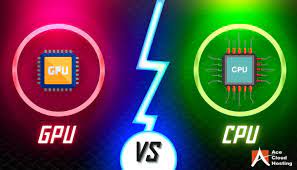Popular Posts
Search This Blog
Blog Archive
About Me
My Blog
AI Chips vs. CPU/GPU: A Comparative Analysis
Artificial Intelligence (AI) has become a transformative force in various industries, from healthcare and finance to autonomous vehicles and entertainment. As AI applications have become more complex and demanding, so has the need for powerful hardware to support them. This has led to the development of AI-specific chips, often referred to as AI accelerators, which are designed to excel in AI workloads. In this blog post, we will compare and contrast AI-specific chips with traditional CPU and GPU architectures, exploring the strengths and weaknesses of each.
The Traditional CPU and GPU
Central Processing Unit (CPU):
- CPUs
are the general-purpose workhorses of computing. They are designed to
handle a wide range of tasks and offer great versatility.
- They
are optimized for single-threaded tasks, making them suitable for
sequential and multi-purpose computing.
- CPUs
have a few powerful cores capable of executing a wide variety of
Instructions.
Graphics Processing Unit (GPU):
- GPUs
are primarily designed for rendering and graphics tasks, but they have
evolved to become highly parallel processors.
- They
excel in handling parallel tasks and are well-suited for general-purpose
Computing, especially in tasks like gaming and scientific simulations.
- Modern
GPUs have thousands of smaller cores, making them excellent for
Parallelism.
The Rise of AI-Specific Chips
As AI workloads grew more prevalent, CPUs and GPUs started
to show their limitations in handling AI tasks efficiently. AI-specific chips
were developed to address these shortcomings.
AI Accelerators:
- AI-specific
Chips, such as the NVIDIA Tensor Processing Unit (TPU), Google's Tensor
Processing Unit, and others, are designed specifically for AI workloads.
- They
are highly parallel and optimized for the types of mathematical operations
commonly used in neural networks, such as matrix multiplications.
- These
accelerators often provide significant speedup in AI training and
inference tasks compared to CPUs and GPUs.
Comparing the Two Approaches
1. Efficiency:
- AI
chips are far more power-efficient when it comes to AI workloads. They can
perform a large number of AI-specific calculations with minimal power
Consumption, reducing operating costs.
- CPUs
and GPUs are less efficient for AI workloads, as they were not designed
with these specific tasks in mind. They consume more power and generate
more heat when running AI models.
2. Performance:
- AI
chips excel in AI performance, delivering significantly faster results in
training and inference tasks. This is crucial for real-time applications
like autonomous driving and natural language processing.
- CPUs
and GPUs are versatile but often struggle to keep pace with the
computational demands of modern AI models. They may require multiple GPUs
to achieve the same performance as a single AI chip.
3. Flexibility:
- CPUs
and GPUs are flexible and can handle a wide variety of tasks, making them
ideal for general-purpose computing.
- AI
chips are highly specialized and optimized for AI tasks, making them less
versatile for other types of computing. They are a dedicated solution for
AI workloads.
4. Cost:
- AI
chips can be costly to develop and integrate into hardware, which may
increase the initial cost of AI-focused systems.
- CPUs
and GPUs are more widely available and cost-effective for general-purpose
computing but may require more power and space to achieve similar AI
Performance.
Conclusion
In the realm of artificial intelligence, the choice between
AI chips and traditional CPU/GPU architectures depends on the specific needs of
the application. AI-specific chips shine when it comes to power efficiency and
AI performance, making them ideal for AI-centric tasks. CPUs and GPUs, on the
other hand, remain essential for general-purpose computing and more
budget-conscious projects.
As AI continues to shape our world, the synergy between AI
chips and traditional hardware will likely continue to evolve. We can expect to
see further advancements and optimizations in both areas as the demand for AI
applications grows. The choice between the two will ultimately come down to a
balance between performance, flexibility, and cost-effectiveness





0 Comments